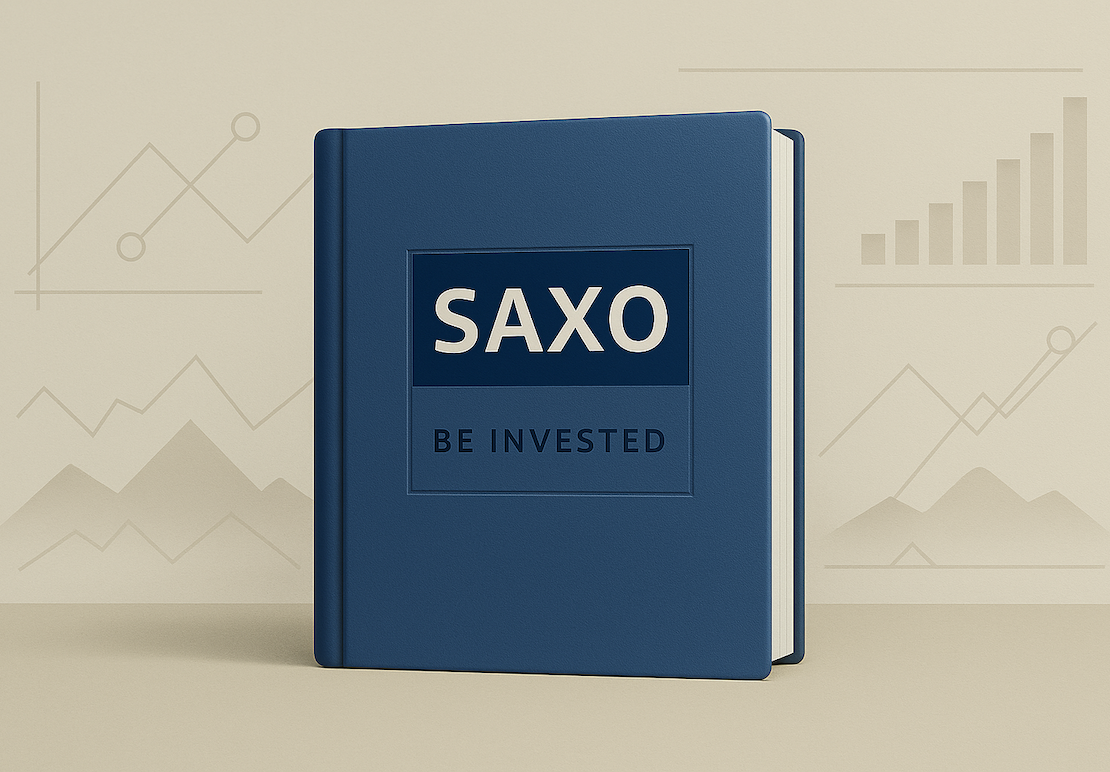
Investing your savings is the secret to achieving financial independence. It will allow you to earn money without doing anything while you sleep or go about your business.
But then, here’s what usually happens:
Me: The one, the only… You: Oh cool, which online broker do you recommend then? You: Just so we’re clear, I want a Swiss-based broker! Me: Ah, so I was saying, the one, the only, the only, the only one, you have to choose Saxo Bank. You: Uh, isn’t that a Danish thing? Me: Yes, historically, but Saxo Bank Switzerland has a Swiss banking license. So it’s like Swissquote or Cornèrtrader, except that Saxo is the most optimal in terms of fees and access to the best ETFs on the market.
If that alone convinces you, then you can create your Saxo account by following this link directly:
You’ll get CHF 200 in reimbursed brokerage fees (and help support the blog in the process, thanks!).
If, on the other hand, you’re more the type who wants to understand all the ins and outs, then I’ll let you read my complete Saxo guide. Their trading platform won’t hold any secrets for you after that!
My aim with this guide is to help you step by step: from opening your account to the pleasure of seeing your savings grow and your first dividends arrive in your account.
Are you ready?
What’s an online broker, just to make sure we’re talking about the same thing?
In concrete terms, when you open an account with Saxo Bank, an online brokerage platform, you have access to a wide range of investments: equities, ETFs, bonds, or even foreign exchange (FOREX).
Once you’ve made your first investments, you can easily track their progress using Saxo’s built-in monitoring tools. As your investments grow, so will your wealth, thanks to the regular dividends you’ll receive.
What is Saxo Bank?
Saxo Bank was founded in Copenhagen (Denmark) in 1992 by Lars Seier Christensen, Kim Fournais and Marc Hauschildt. They have since also set up a subsidiary in Switzerland, which is an authorized bank and securities dealer licensed by FINMA (the Swiss Financial Market Supervisory Authority).
Saxo Bank Switzerland is an online brokerage platform with a physical presence in Switzerland, but attached to a parent company in Denmark. In other words, it’s a bank of Danish origin, offering its services to Swiss investors from offices in Zurich and Geneva.
As a Mustachian investor, you want a practical, fast and cost-effective solution for managing your investments. Saxo Bank is exactly what you need: with just a few clicks, you can access thousands of stocks, ETFs, bonds and currencies, all from the comfort of your own sofa, without costly intermediaries.
One of Saxo Bank’s main assets is its transparency on fees. Whereas the big traditional banks often inflate their fees to finance their marketing campaigns and in-house bonuses, Saxo does everything to keep its costs to a minimum, allowing you to preserve your returns to the maximum over the long term.
If you read the history of the birth of Saxo Bank on Wikipedia, you’ll learn that it was founded in 1992. And that, compared to other fintechs that open their doors and go bankrupt a few years later, is reassuring about Saxo’s solidity.
Before getting to the heart of the matter, I’d like to quickly share with you my experience as a Swiss investor, including the mistakes I’ve made in choosing brokers since 2013…
My background as an investor, and my recommendation of Saxo
I started investing in 2013, when I was discovering the magic of compound interest and the FIRE movement.
Like any good Swiss, I started looking for which broker to choose to grow my savings. Back then, there weren’t all the blogs available today. So I let myself be guided by the enticing marketing of… Swissquote.
So yes, it did the job, except that they charged a lot more than other brokers available to us Swiss investors.
I switched to Interactive Brokers in 2016. It’s a US-based broker. Except some readers like you aren’t comfortable investing via a foreign-based broker.
I’ve also used DEGIRO to invest my kids’ money. Ditto, they are based abroad (Netherlands and Germany).
The recurring question kept coming up:
But which Swiss broker do you recommend MP?
For a long time, Cornèrtrader was the best broker for a Mustachian investor.
Except that since 2024, they’ve been dethroned by Saxo Bank. You’ll find my comparison with full details of brokerage fees here, including how Saxo tops the list among all other Swiss brokers.
And let’s talk about my stock market investments:
- 2013: opened my first brokerage account (the wrong one hehe)
- 2014: deposited my first few hundred Swiss francs and bought my first ETFs (not the right ones, but it was by actually investing that I could see the mistakes I was making)
- 2016: choice of the best broker and new optimal portfolio for FIRE, with CHF 10'000 invested
- 2025: 845'000 invested in ETFs on the stock market, including 145'000 in growth gains (unrealized)
I’m telling you all this so that you don’t think I’m some guru trying to sell you products with the best commissions.
I’ve been there myself, and I’d love to have this kind of article from someone who talks about what they’ve done (and not hypothetical stuff just to sell you their stuff).
You too can invest with Saxo Bank - and I’ll show you how!
Trading platforms aren’t the easiest things to get to grips with, I grant you.
And yet, since 2015-2025, Saxo Bank has worked hard to make their trading tools more intuitive, so as to make them accessible to the average person (lucky you! I’m not telling you what I went through in the early 2010s…).
In short, once I’ve explained the basics, you’ll be on your own in no time. To give you an idea, buying an ETF or a share in a foreign currency now takes me less than 3 minutes in hand.
In the 5 chapters of this comprehensive guide, I’ll take you step by step through the process:
- How to easily open your Saxo Bank account.
- What’s the quickest and easiest way to access your Saxo Bank account?
- How to invest in your first ETF with Saxo Bank to make your savings grow in the most passive way possible.
- The tools integrated into Saxo Bank that I recommend for following the evolution of my investments at all times
Like you, I’ve experienced the apprehension of opening my first account (argh, those endless forms full of complicated financial terms, although fortunately Saxo now offers all this clearly in French!) and the stress of the very first ETF purchase (“Uh, it’s flashing all over the screen, I’m closing everything before I do something stupid!”).
I totally understand how you feel, because I would have loved to have had someone with me right from the start, clearly showing me what to do.
That’s precisely why I decided to write this guide.
Basically, it’s exactly the guide I would have wanted to read when I started investing in the stock market in 2014 (unfortunately not yet with Saxo Bank at the time…).
Still up for it? Then here’s concretely what’s in store for you:
Chapter 1: Why choose Saxo Bank?
Saxo Bank is the online broker I recommend to any Swiss Mustachian investor who wants their trading platform to be based in Switzerland. Before exploring how it works in detail, I’ll explain why I chose this online brokerage platform over any other.
Chapter 2: How to open a Saxo Bank account?
Once I’ve shown you exactly why Saxo Bank is an excellent choice for a Swiss investor, we’ll get down to the nitty-gritty of opening your account. In this chapter, I’ll take you through each screen step-by-step, with simple, reassuring explanations, to make this essential step as smooth and easy as possible.
Chapter 3: Make my first deposit of Swiss francs on Saxo Bank
We finally get to the heart of the matter with this chapter, which covers the first real step in your investing life: transferring your money to your Saxo Bank account. I’ll guide you step-by-step, with detailed screenshots, so you can easily send your hard-saved CHF to Saxo.
Chapter 4: Which Saxo Bank platform should I use?
As I said earlier, online investing can seem a little intimidating at first. A good example is that there are several different ways to access your account. But don’t worry, we’ll go through it all in detail, and you’ll soon understand why it’s like that. In the end, nothing too complicated, I promise!
Chapter 5: How to buy an ETF on Saxo Bank?
TADAA! We had to wait until Chapter 5 to finally get our hands on the grail that will help you achieve financial independence: buying an ETF or a stock, no matter what country it comes from. And thanks to this chapter, you’ll know exactly how to do it in just a few clicks on Saxo Bank.
Bonus: my detailed review of Saxo Bank 2025
My detailed review of Saxo Bank after a comprehensive analysis. I compare it to other Swiss brokers to help you make the best choice.
So much for the program. I sincerely hope this guide gives you the impetus to invest in the stock market and build a secure financial future.
If you ever decide to open your Saxo Bank account via this affiliate link (entitling you to CHF 200 brokerage fee refund), thank you very much: it helps support the blog, and frees up more of my time to write other guides as comprehensive as this one.

